The past couple days, JacoBLOG has been focused on Ford’s CEO, Jim Farley. Among the many tasks on his checklist, there’s minding the customer experience. In that regard, Farley is far from alone. Most corporate leaders, especially at B-to-C companies, are sweating the CX (customer experience) details in everything they do.
Mass media platforms and their companies have traditionally been tardy in this all important area. The one-to-many nature of legacy brands made it convenient to focus on content and sales marketing, rather than the experience one has when tuning in and engaging. In an environment where consumers are increasingly in control of their media experiences, traditional outlets like radio have felt the turbulence of competition.
And so today, we take a return trip to June of 2019, and a blog post that generated a lot of comments and reaction when it first published. A lot has changed since then – namely a global pandemic, and the growth of consumer-generated platforms like Twitch and TikTok that are especially resonant to Gen Zs. And yet a lot has remained the same.
Radio broadcasters continue to struggle with giving the audience a seat at the table. And every year, the tab for ignoring the CX just keeps getting higher – like inflation. Before you know it, the cost becomes astronomical. – FJ

Luck or coincidence? When we first launched our maiden Techsurvey in 2005, the timing turned out to be magnificent. The techie planets lined up, as the iPhone, Facebook, and YouTube (to name a few) came to market – and took off.
Amazing, right? Smartphones, social media, and video streaming all hit their stride right around the same time. And in their wake, the damage they did to traditional media outlets like newspapers, TV, and broadcast radio was the big story. And it continues to this day.
Of the traditional media, it’s hard not to give radio the nod for “Best Performance By Old Media.” Nielsen’s newest “Audio Today” reports reveals broadcast radio’s vital signs continue to be solid.

Overall, 92% of adults 18+ listen to the radio each week – higher than any other measured platform, including TV, personal computers, smartphones, TV-connected devices, and tablets. Not bad, right?
But despite radio more than holding its own, the landscape has become increasingly crowded. Disruption has become a naughty word in legacy media circles – the acknowledgment that new media and technologies are on their way to becoming mainstream.
A Harvard Business Review analysis by Thales S. Teixeira suggests the damage to old school media outlets has taken place due to unforced errors, rather than outside predators disrupting audiences.
In “Disruption Starts With Unhappy Customers, Not Technology,” Teixeira makes the case that it is consumers who make the decision to adopt – or reject – new platforms, products, and technologies.
Rather than simply jump into the next big digital category to try to answer disruption, Teixeira says companies would be better off with a renewed focus on addressing their customers’ desires and needs.
He goes on to make an impressive list of “incumbent” companies that were disrupted by an outside “predator.” In the video game space, Twitch has upended Electronic Arts. Netflix has wreaked havoc on Comcast, while Gillette has been damaged by Dollar Shave Club.
As you might expect, radio doesn’t get a mulligan. He points to iHeartRadio as the brand that’s been disrupted by Pandora. But he could have also mentioned any radio broadcaster as “disruptee,” as well as satellite radio, podcasting, Spotify, and myriad other as “disruptors.”
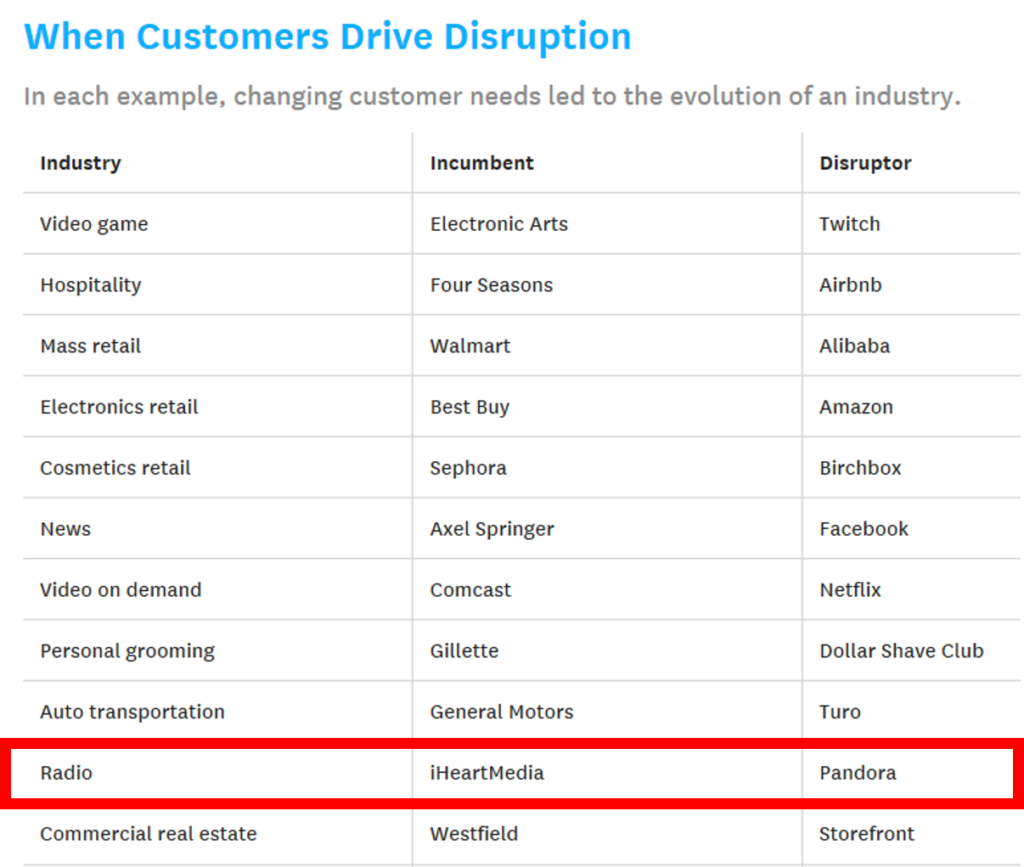
So, what can legacy brands do to stave off the many predators in their digital midst, as well as ensure it’s connecting and pleasing its consumer base?
Teixeira calls it a “customer side focus,” and the concept is to determine how to provide benefits to users via new products or improvements to existing ones. And Teixeria suggests creating new offerings “adjacent” to activities (radio listening) can provide success.
Many stations (and the companies that own them) are on this path, working on streams, podcasts, and videos that complement the main brand. But he warns that when traditional businesses – like radio broadcasters – focus on their own benefits, rather than turning the emphasis on consumers, it’s easy to fail.
I thought about this last week while in an Uber in Florida driven by a guy named Mario. I have become a regular user of Uber (or Lyft), not because I love the company, but because I was driven away by the traditional business model – the taxicab industry.
How frequently do travelers encounter a rude or indifferent cab driver or one that spent the entire ride on the phone or playing his favorite radio station or personal playlist at loud levels? Too often, those video screens in the back seat are blaring ads and other useless information, often impossible to mute. Then, there’s the randomness of hailing a cab or hoping the driver knows how to find your destination. And then there’s payment – another clunky process that slows down the journey.
So, was the taxicab industry disrupted by Uber? Or did it alienate its customers to the point where when a better alternative arrived they took it?
I realize there are aspects to the Uber/Lyft experience that have been less than ideal, but while sitting in the backseat of Mario’s Toyota Camry (with cup holders!), I started looking around. It turns out Mario isn’t just a good driver – he’s focused on customer service.
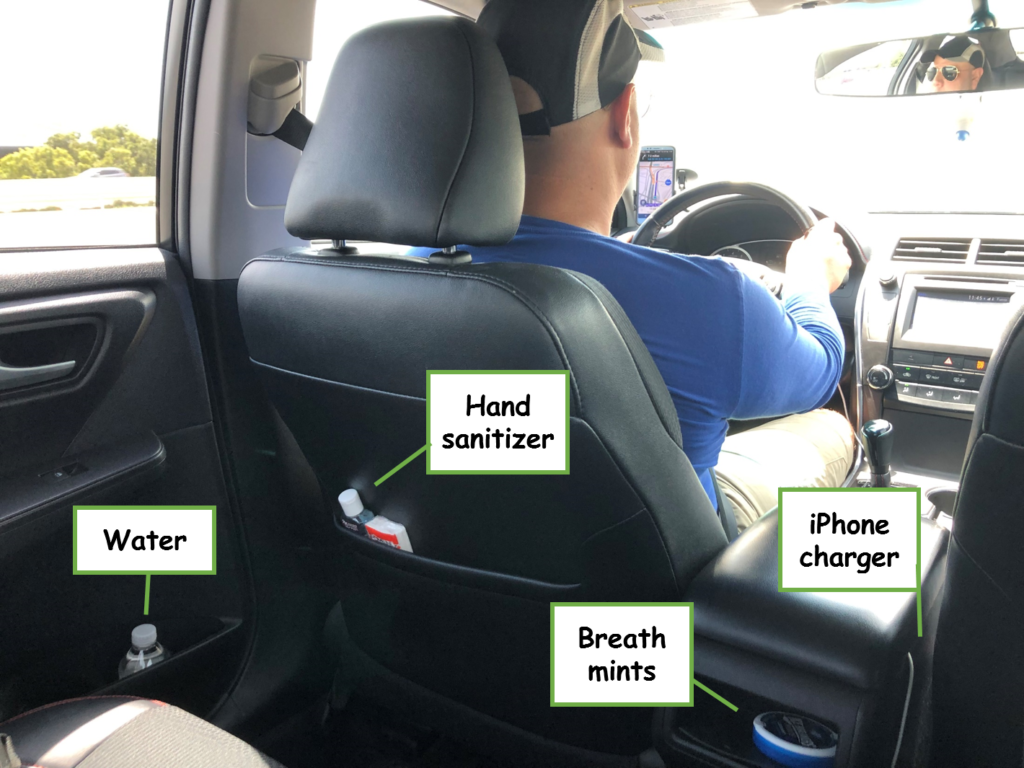
Everything I could have possibly wanted (except for the New York Times crossword puzzle) was within reach. Never ever have I seen the back seat of a New York hack with these basic amenities.
But it wasn’t about breath mints or hand sanitizer. It was that Mario considered and respected his customers’ needs. It told me this guy cares more about service than the hundreds of taxi drivers I’ve encountered over the decades.
I wouldn’t be in the Uber zone if the taxi industry hadn’t driven me away, leaving me vulnerable to smart, new competitors trying to solve my problems and meet my needs.
And so, when you think about what core radio listeners are trying to tell us, it is about self-inflicted wounds. Sure, disruption plays a role, too. But those time-honored radio negatives – commercial load and music repetition – are right near the top of the list of reasons why people gravitate away from radio.
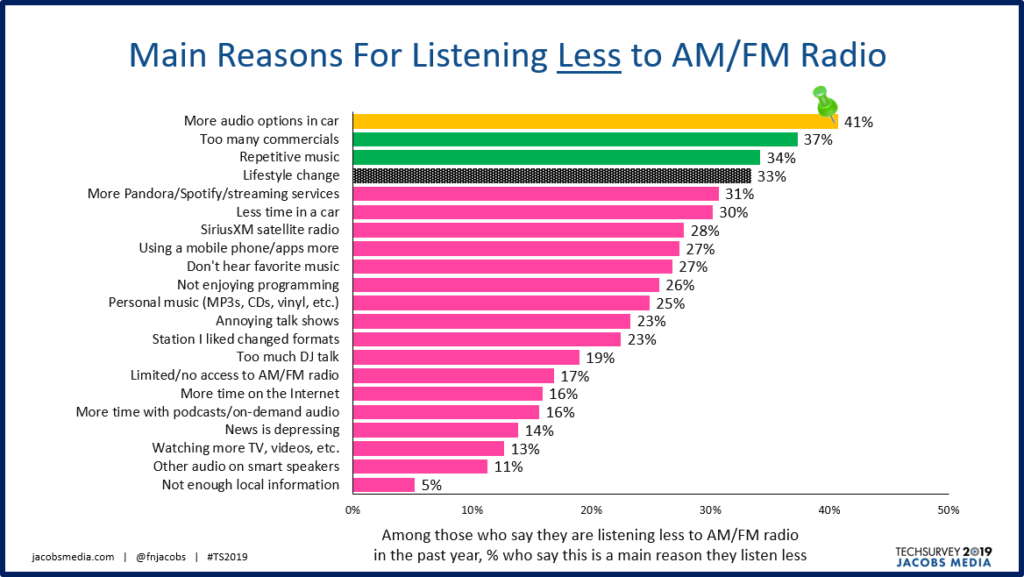
Yes, “more audio options” in the car is mentioned by four in ten of those listening less to radio. But the age-old negatives – commercials and repetition – continue to be culprits.
Radio veterans can sneer at those findings as being “just typical listener complaints.” But when you think about the ways in which disruptors from Pandora to SiriusXM address both problems, Teixeira’s points are well taken.
When I think about that relentless attention on the customer, as well as that “side focus,” Jeff Bezos comes to mind. As he has said time and time again:
“We’re not competitor obsessed, we’re customer obsessed. We start with what the customer needs and we work backwards.”
To make that point, Bezos used a fascinating device during Amazon’s early strategy meetings. He’d drag in an empty chair, and informed his team 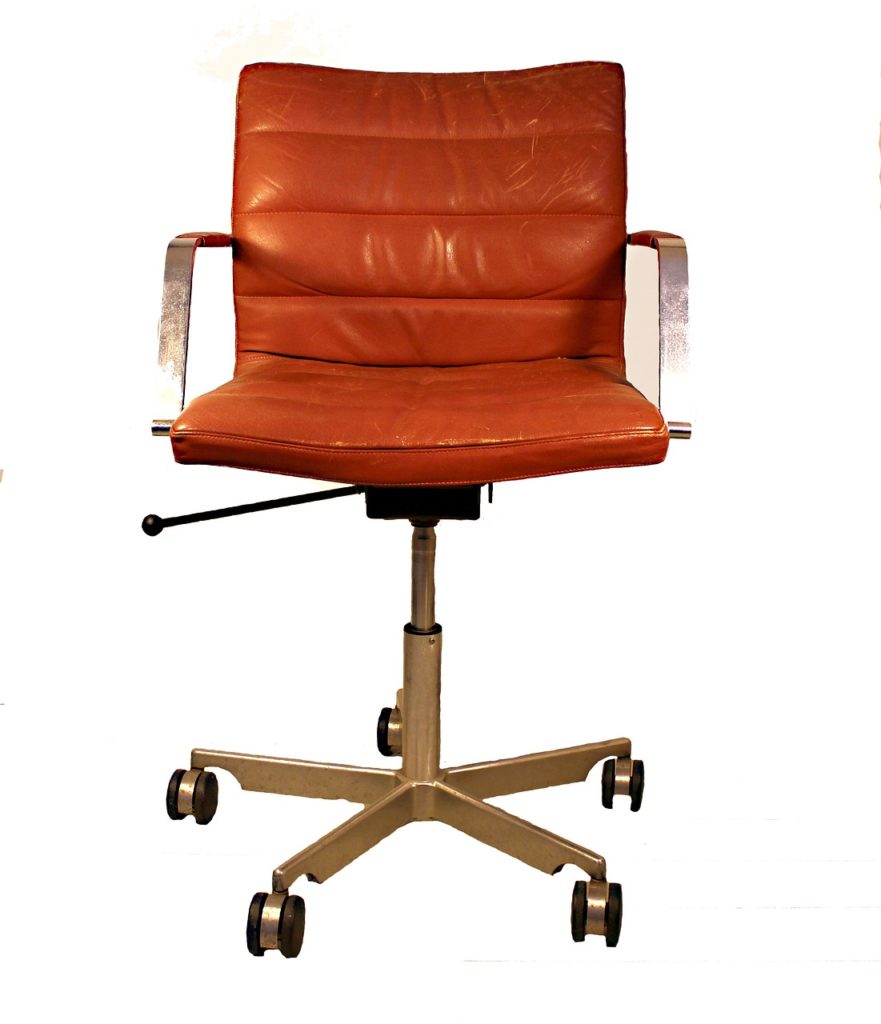 that seat was “the customer.” As they worked through their agenda, there was always that focus on the end user of the Amazon product.
that seat was “the customer.” As they worked through their agenda, there was always that focus on the end user of the Amazon product.
Bezos believes that “Focusing on the customer makes a company more resilient.” And I would make the case that same focus makes an industry more resilient.
“Resilience” is becoming a buzzword in the world of business. Last year, CES started its own track of sessions and speakers revolving around this concept.
For radio broadcasters, it’s about analyzing research – whether it’s Techsurvey, perceptual studies, or focus groups – and really listening to listeners. For years, they’ve been telling us what’s wrong. And for years, we’ve been telling ourselves, they always complain about the same old things. Or that our “business model” is dependent on 12 minutes of commercials an hour.
And now, radio is surrounded by an armada of disruptors. Is it that others are coming up with better technology or is that radio broadcasters would serve themselves and their audiences better by embracing customer needs, wants, and desires.
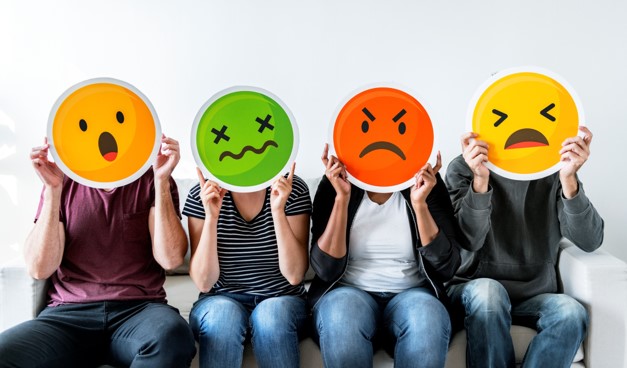
That’s why my favorite customer service quote is from Bill Gates who reminds us:
“Your most unhappy customers are your greatest source of learning.”
When we stop all the hand-wringing over disruption, and focus on our listeners, radio will once again be what resilience is truly all about.
- Media And Technology In 2025: Believe It Or Not! - April 18, 2025
- In Radio, You Just Never Know - April 17, 2025
- The Secret To Making A Great Podcast (And Great Radio) - April 16, 2025




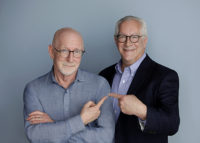
Leave a Reply